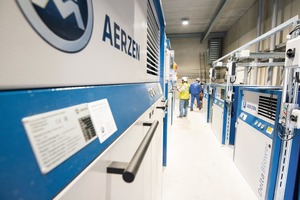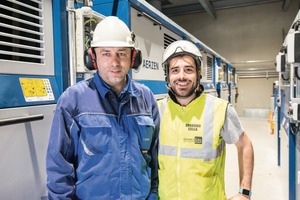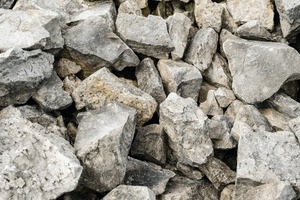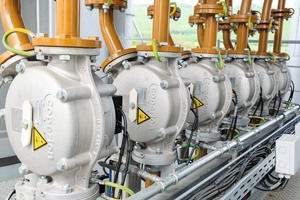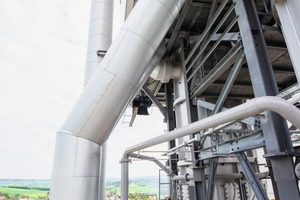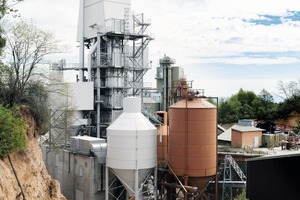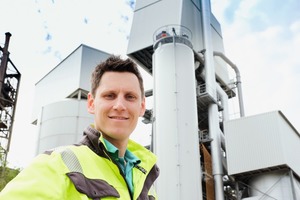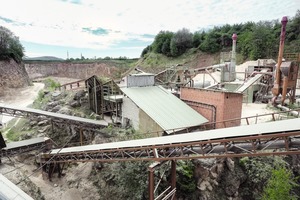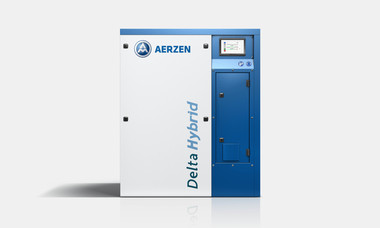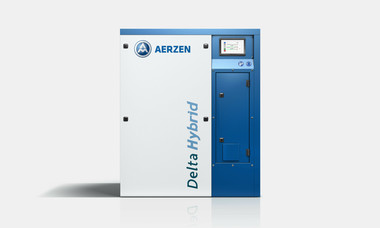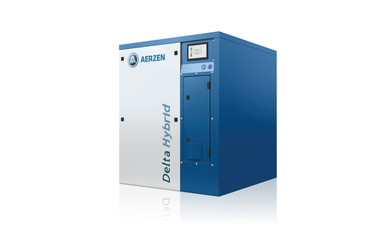Small lime works with big technology
In Northern Hesse, they are calcining dolomite, a crystalline mineral mixture consisting of calcium carbonate and magnesium carbonate. This burnt lime is particularly suitable for the steel industry, as the magnesium in the dolomite, as an oxide (MgO), has a positive effect in steel production and protects the converter walls when refining raw iron into steel. The general task of the added lime is to bind the sulphur in the melt. Therefore, steelworks are among the regular customers of Köhler Kalk, located in Vockerode, Hesse, east of Kassel. “There are not many dolomite deposits in Germany,” reports Christian Köhler, technical manager of the smallest lime works in Germany.
Using the best available technology when burning lime
In view of the future security of the location in the Werra-Meissner district, the family-owned company decided to invest in a new kiln in 2017. The QualiCal specialists from Italy received the order. Designed as a parallel flow regenerative kiln (GGR kiln) this type is among the most energy-efficient lime burners according to BAT (best available technology, component of the installation authorisation law according to EU Directive 2010/75/EU concerning industrial emissions). While in the past, for Köhler Kalk, the consumption of coke had been the biggest factor in their operating costs, this has now shifted to their pulverised lignite and electrical energy costs. “Hitherto, electricity was never an issue,” reflects Köhler. “The old kiln was working almost mechanically.” When the new plant has been run-in, the fuel will no longer be brought into the kiln together with the dolomite rock in layers and set on fire, but instead blown directly into the calcination zones with distributed burner lances. For this, blowers for transport and cooling air are as necessary as they are for generating process air in GGR kilns.
Hybrid blower solution reduces energy consumption
The targeted blowing in of lignite with a total of 24 burner lances - equally distributed between the two shafts - improves the thermal efficiency as the carbon directly releases its energy onto the rocks. The calcination is accompanied by a sophisticated airflow - the parallel flow regeneration (GGR). At Köhler Kalk, rotary lobe compressors of the AERZEN Delta Hybrid series assume this function. Hybrid blowers combine two procedures for conveying air in one machine: the Roots principle as isochoric compression for low pressures and the screw compressor principle with internal compression for higher pressures. As far as the concept is concerned, the Delta Hybrid is based on the well-known and successful AERZEN series Delta Blower and Delta Screw. AERZEN has calculated that the rotary lobe compressor requires 15 % less current than existing blowers concerning absolutely oil-free conveying of air.
At Köhler Kalk, the economical use of electrical energy has a significant effect on the efficiency of the entire production - and this with short ROI-periods. The importance of the blower technology in modern GGR kilns becomes clear when you look into the machine room of the new kiln. For the combustion air, three Delta Hybrids D 75 L (max. 132 kW, 4 000 m³/h, 1 000 mbar) are in operation. Another two assemblies with the same capacity convey cold outside air, blown in from the bottom into the calcined lime, to cool it down to a considerably lower temperature before discharging it. For cooling the burner lances in the two furnace towers and the pneumatic conveying of the pulverised lignite, Köhler Kalk will in future rely on the AERZEN Delta Blower series. As the (in total) three assemblies type GM 25 S (55 kW, max. 1450 m³/h) provide considerably less capacity than the five Delta Hybrid blowers, Köhler Kalk decided not to have an upgrade here. “Our goal was to achieve maximum efficiency gains with any increase in the plant’s costs kept as low as possible,” says Köhler.
The future belongs to Hybrid blowers
“In kilns, positive displacement blowers are traditionally used without exception. These are working very reliably, but consume quite a lot of energy,” explains Francesco Cella, CTO at QualiCal. With the change to rotary lobe compressors, the plant manufacturer succeeded in making available the necessary air volumes as energy efficiently as possible in synergy with an exact speed control of the blowers. Due to its special rotor profiles, the Delta Hybrid is able to save energy by means of internal compression alone. For the first time in the low pressure market we succeeded in achieving such a significant saving without any loss in quality and reduction in reliability of the positive displacement blowers.
“We have a longstanding partnership with AERZEN and pursue a vision, which is characterised by quality, reliability and innovation,” says Carlo Cella, CEO of QualiCal. On this project, the partnership resulted in very close co-operation between QualiCal and AERZEN at an early stage. The process data was analysed, simulated and, finally, the results were reflected in the blower technology. “The success is the result of a very trusting and extensive exchange of information. We are very good at burning lime, AERZEN is very good at generating process air – we complement each other very well,” adds Cella, who is clearly pleased with the collaboration.
Conclusion
The new assembly at Köhler Kalk clearly shows how economic advantages, sustainability and increasing product quality can be reconciled. Even though the Hybrid technology is initially more expensive than conventional blower technology in terms of the hardware costs, the noticeably lower operating costs justify investing in Delta Hybrid rotary lobe compressors. From the point of view of the operator, Christian Köhler is convinced that the future belongs to Hybrid blowers in kiln construction for lime treatment. “Our kiln is the first in Germany to calcine dolomite in the GGR procedure. So, we are among the pioneers and are eager to learn what the efficiency gain after running-in operation will be,” he says.
Autor/Author: Thorsten Sienk, freier Fachjournalist/Specialised journalist, Bodenwerder

